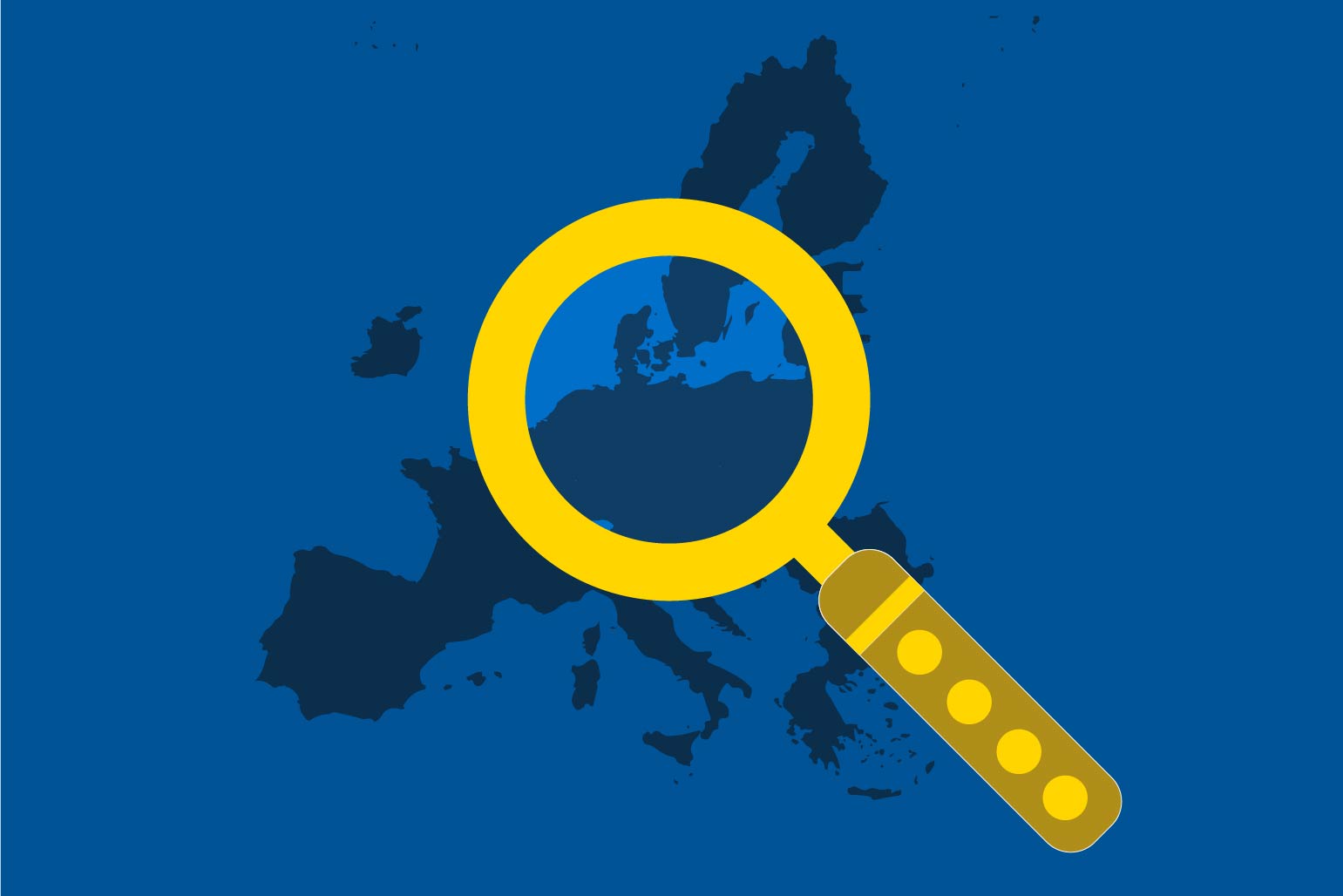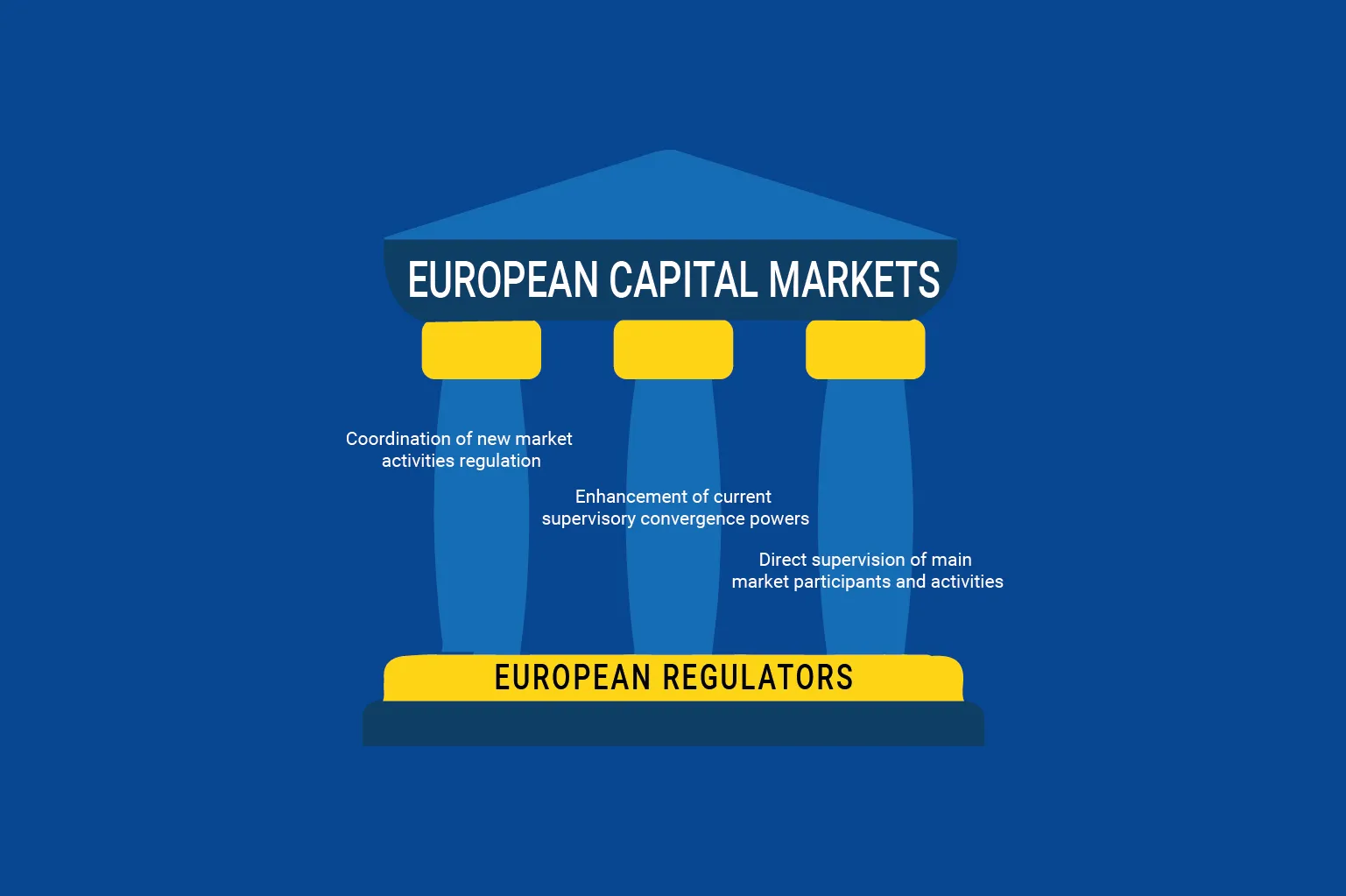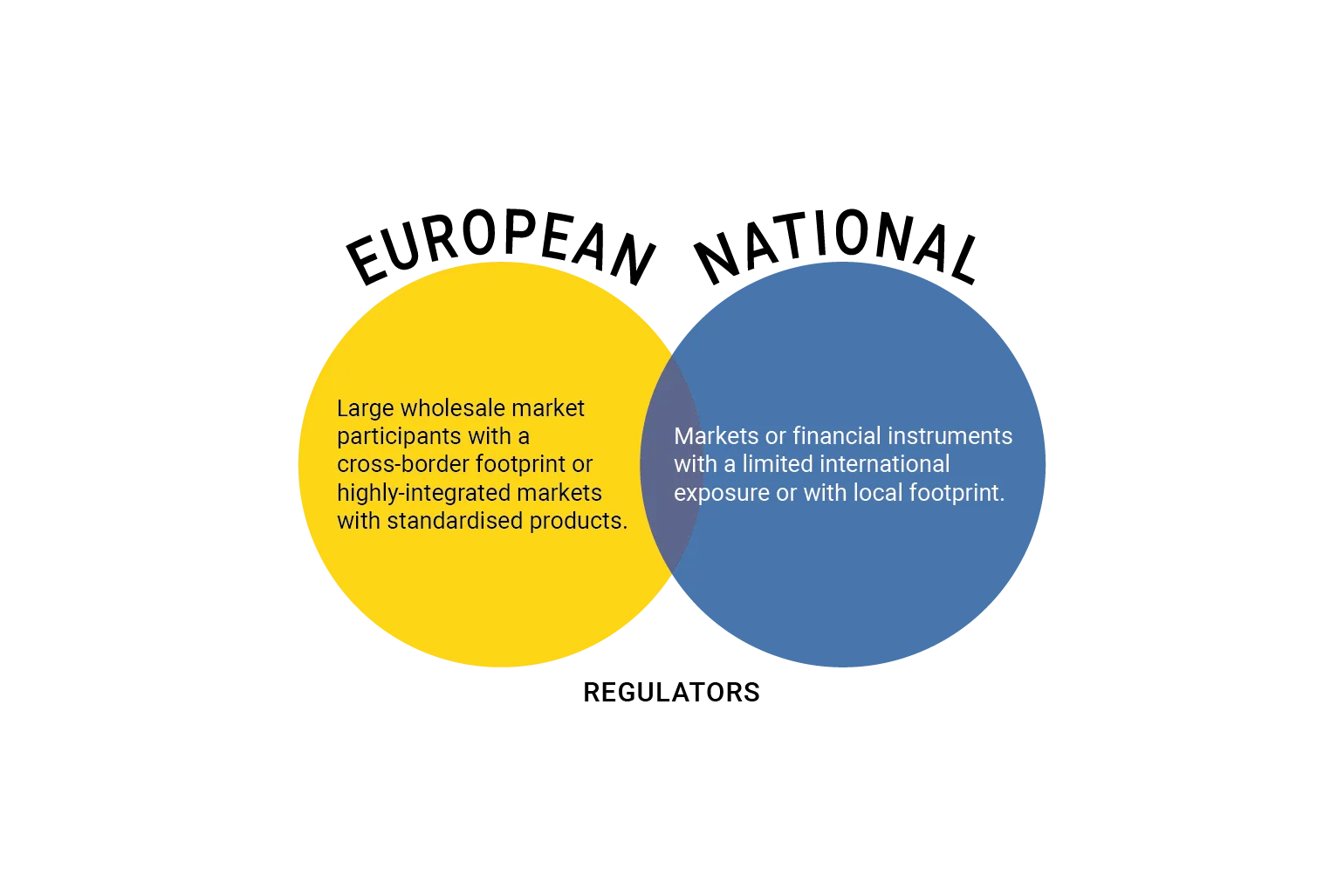European supervision fit for capital markets union

Capital markets union (CMU) is a European Union (EU) goal that will lead to a single market for financial services and free flow of capital. CMU offers a harmonised pan-European capital market where citizens can invest in markets of other countries as if they were investing on their own local bourse. CMU is good for economic growth, good for financial stability, and good for the international role of the euro. But to assure its success, CMU also requires well-organised regulation, to protect investors and foster prosperity.
Last summer, a High Level Forum reported on the progress needed to make CMU work. One of this blog’s authors was a Forum participant. The authors of this blog followed up by publishing a blog post detailing the five inescapable “S” features CMU needs. In November, the European Commission, which convened the Forum, published a CMU action plan that also factored in the evolving Covid-19 pandemic as well as the United Kingdom’s (UK) EU exit.
In this blog, we explain why, to achieve a successful CMU, one of those “S” features, supervision, must comprise three pillars of European supervision. These pillars are: leading in areas of financial innovation, enforcement of supervisory convergence, and direct supervision of institutions with a cross-border footprint. We acknowledge that some aspects of supervision are best handled by national regulators within European countries, while others require a pan-European approach in step with CMU. Harmonised and integrated financial supervision in Europe, reflecting the principles of subsidiarity and proportionality in EU Treaties, is crucial for building safer capital markets and ensuring a level playing field for all market participants.
The convergence of supervision practices has become even more pressing post-Brexit. In the past, the concentration of wholesale financial services – such as derivatives clearing – meant that the UK supervisor acted de facto as a central agent for the EU. This will no longer be the case, either because of regulatory divergence over time or decentralised financial services. Moreover, the EU may face tougher competition from the highly-developed UK capital market hub, as well as from financial centres in Asia, the Middle East, and the United States (US). This means European financial services need a strong CMU. And boosting European supervision is one of the game changers.
First steps taken – more progress needed
The regulations passed in the aftermath of the 2008 financial crisis dealt mainly with investor protection and market transparency (MIFID 2/R), trading of derivatives (EMIR), securities depositories (CSDR), and securities financing (SFTR). They defined a more complete single rulebook for EU capital markets. In 2011, the European Securities and Markets Authority (ESMA) and the European Insurance and Occupational Pension Authority (EIOPA) were created.
However, the implementation of this rulebook and the set-up of the supervisory authorities responsible for it still differ from one EU country to another. Enforcement powers are often splintered among several national regulators.
The challenge for the EU is to define and build up an efficient supervisory model that harmonises markets and upholds transparency and investor protection. At present, divergent supervisory practices across the EU hamper cross-border investments.
The US has shown that the implementation of sound, centralised supervision at the federal level is the best guarantee for a deep and integrated market. The two main agencies, the Securities Exchange Commission and the Commodity Futures Trading Commission, have clear missions to enforce US laws on securities and markets, propose new rules, and supervise financial institutions operating in the US capital markets. They provide central supervision for the US market as a whole.
We believe European capital markets need increased powers and responsibilities for ESMA and EIOPA, with a three-pillar structure. First, the EU should ensure ESMA and EIOPA take a leading role in defining regulations and supervision practices applying to new financial and market activities. Second, the EU should strengthen the enforcement powers of ESMA and EIOPA to guarantee the convergence of market practices. Third, the EU could draw inspiration from banking union to implement direct supervision by ESMA and EIOPA of the most international market participants, such as cross-border banks.
Figure 1: A new regulatory structure

Source: ESM
Pillar 1 – Coordinate regulation of new market activities
European supervisory coordination is required to adjust to financial innovation. The digital age and main economic trends create opportunities for developing innovative financial services at the European level. Realising the full potential of this new era requires defining an appropriate supervisory framework – from the start. This is a chance for the EU to give ESMA and EIOPA a central role in coordinating efforts of national regulators and supporting the emergence of European champions and standards.
First, the EU aims at developing the most advanced ecosystem for green and social finance in the world. It is currently defining a comprehensive taxonomy of Environmental, Social and Governance criteria. To ensure a homogeneous application of the rules and strengthen investors’ trust, ESMA and EIOPA should lead the reflection on the supervision of this key market segment.
Second, innovative technologies offer unique opportunities to progress towards new business models and practices. These new activities – for example, providing payment services with fintech companies – require regulators to constantly adapt their frameworks to guarantee transparency and safety to investors and customers. Regulators can do this most efficiently based on a common framework and under European coordination.
Third, new technologies also allow far-reaching changes to the processes of supervision. ESMA and EIOPA should have more responsibility for defining formats of digital reporting and storing financial information. The set-up of an EU-wide digital platform to centralise companies’ information, similar to the Edgar financial information database in the US[1], would be efficient and benefit investors. Similarly, centralised data storage facilities of transactions taking place on European capital markets would be helpful to detect market abuse. ESMA and EIOPA could become a hub for market data collected by national regulators, and lead the effort towards maximising the benefits of data-driven supervision, thus providing the EU with unique analytical capacities.
Pillar 2 – Enhance current supervisory convergence powers
ESMA and EIOPA need increased powers in some specific areas to achieve greater regulatory convergence. In particular, there is scope in the EU for further harmonisation of administrative practices, from registration procedures to translation requirements.
Besides, peer reviews run by the two authorities on a regular basis across national regulators are a powerful instrument to identify gaps in supervisory practices. Some recent amendments have limited the influence of national regulators in the conduct of that exercise. However, the EU needs to carefully observe whether a further push is necessary.
In the same vein, ESMA and EIOPA issue “Questions & Answers” (Q&As) to national regulators or market participants in order to build consistent supervisory practices. If, however, national regulators do not comply with the content of these non-binding Q&A, ESMA and EIOPA could resort to issuing mandatory guidelines.
Moreover, the EU has endowed ESMA and EIOPA with the capacity to suspend the application of some EU regulations across the EU in exceptional cases, such as conflicting rules. Enlarging the application field of the current procedure could be useful, in particular, to provide market players with flexibility in adapting to new regulations.
Finally, as the credibility of a supervisor depends to a large extent on its ability to enforce common rules, ESMA and EIOPA should be able to impose penalties and sanctions in breaches of rules with a pan-European dimension.
Pillar 3 – Directly supervise main market participants and activities
It is evident that we need to move closer towards a form of “European Securities and Exchange Commission” modelled on banking union if we want a deeply integrated single European capital market.
Hence we support the idea of giving ESMA and EIOPA more direct supervision powers to enforce efficiency gains and curb negative capital market externalities.
On that basis, one can draw on a similar model as banking union and the two-tier organisation of banking supervision, where the Single Supervisory Mechanism plays a central role and National Competent Authorities are key for local supervision. They work together in joint supervisory teams.
Banking union established a clear split of banking supervision powers along national and EU levels. The European Banking Authority, the EU agency in charge of banking regulation, was given a strong mandate to strengthen regulatory convergence. And, the supervision of the largest banks is entrusted to the EU level, while smaller banks continue to be supervised at the local level by the national banking regulators with indirect oversight from the European regulator.
One needs, of course, to consider the greater diversity of capital market financial institutions and services compared with banking activities: a more granular split of responsibilities between national and EU financial regulators is necessary. Market activities or sectors with a strong cross-border footprint, such as payment services or depositories, are priority areas for further supervisory convergence and centralisation.
Figure 2: How future regulation could be apportioned between European and national regulators

Source: ESM
ESMA already has direct supervision of some EU-wide institutions: credit rating agencies and trade repositories. It will also soon be the single supervisor for EU critical market indices as well as data providers.
One may consider how to extend ESMA’s direct supervision to large wholesale market participants with a cross-border footprint or highly integrated markets with standardised products, where synergies and efficiency gains are possible.
Direct supervision of clearing houses, trading exchanges, and central securities depositories with important international activities are natural candidates. The biggest investment firms or asset managers operating across the EU could benefit from ESMA regulation as well. In particular, given the ongoing debate on the possible relocation to the EU of UK-based clearing activities, it would make sense for ESMA to have direct oversight of these activities, because it already has more information than any other national regulator within the EU.
Markets or financial instruments with a more limited international exposure or with a local footprint could remain under the direct supervision of their domestic regulator as few scale effects and benefits can be expected from a full transfer of responsibility to ESMA and EIOPA. In the fund industry, for instance, the proximity of the regulator to the local market and the knowledge of market practices are key. Here, supervision should remain in domestic regulators’ hands while ESMA enforces a convergence of practices.
CMU does not mean a single financial centre
Enhancing supervision should not be perceived as a driver towards the creation of a single financial centre in the 27 EU Member States. The organisation of supervision across the EU requires building trust in the various Member States that a single supervision mechanism would not be detrimental to the existence of the current financial centres.
We believe that the current pandemic crisis makes completion of CMU even more crucial as economic recovery will require large amounts of new financing. Only well-functioning and efficient capital markets can channel domestic and international savings towards European borrowers. Harmonisation and integration of capital market supervision within the EU will definitely contribute to a large extent to the achievement of CMU.
In a post-Brexit world, we can build a stronger, better, and fairer CMU. This means vibrant financial centres across the continent and more integrated and effective supervision moving towards a “European Securities and Exchange Commission”.
We would like to thank Steven Maijoor (ESMA Chair) for his valuable comments.
The authors would like additionally to thank Olivier Pujal, João Gião, Nicoletta Mascher, Loukas Kaskarelis, Stefano Finesi, George Matlock and Anapaula Garcia Soto who contributed to this blog post.
Further reading
Kalin Anev Janse, Rolf Strauch (2020) Momentum builds for Europe’s capital markets union
Nicoletta Mascher, Rolf Strauch (2020) A stronger banking union for a stronger recovery
Klaus Regling (2020) Regling’s Take: Why we need to boost the euro’s international role
Nicoletta Mascher, Rolf Strauch, Andres Williams (2020) A backstop to the Single Resolution Fund now!
Martin Hillebrand, Peter Schwendner (2021) Showing how EU solidarity calmed markets over Brexit
About the ESM blog: The blog is a forum for the views of the European Stability Mechanism (ESM) staff and officials on economic, financial and policy issues of the day. The views expressed are those of the author(s) and do not necessarily represent the views of the ESM and its Board of Governors, Board of Directors or the Management Board.
Authors


